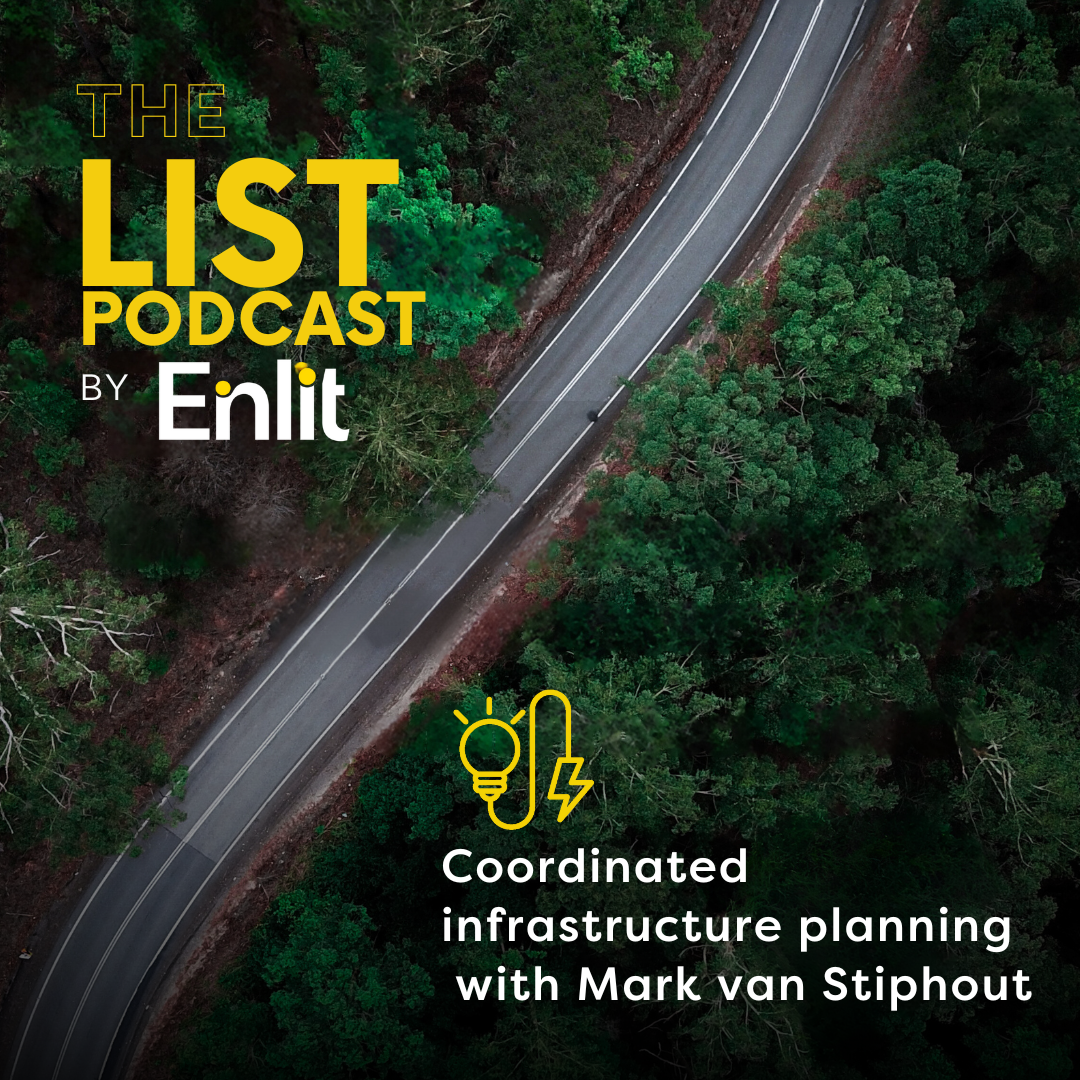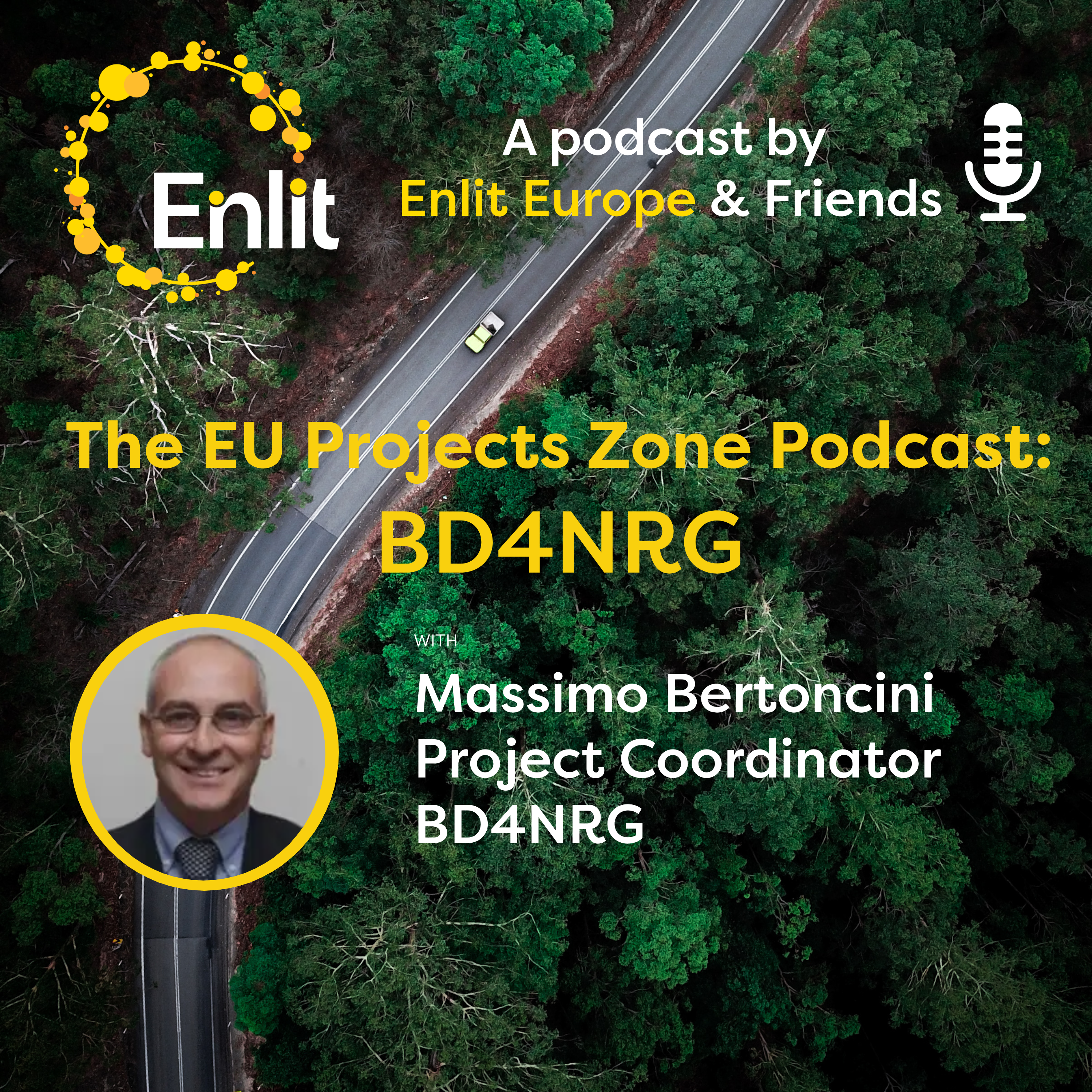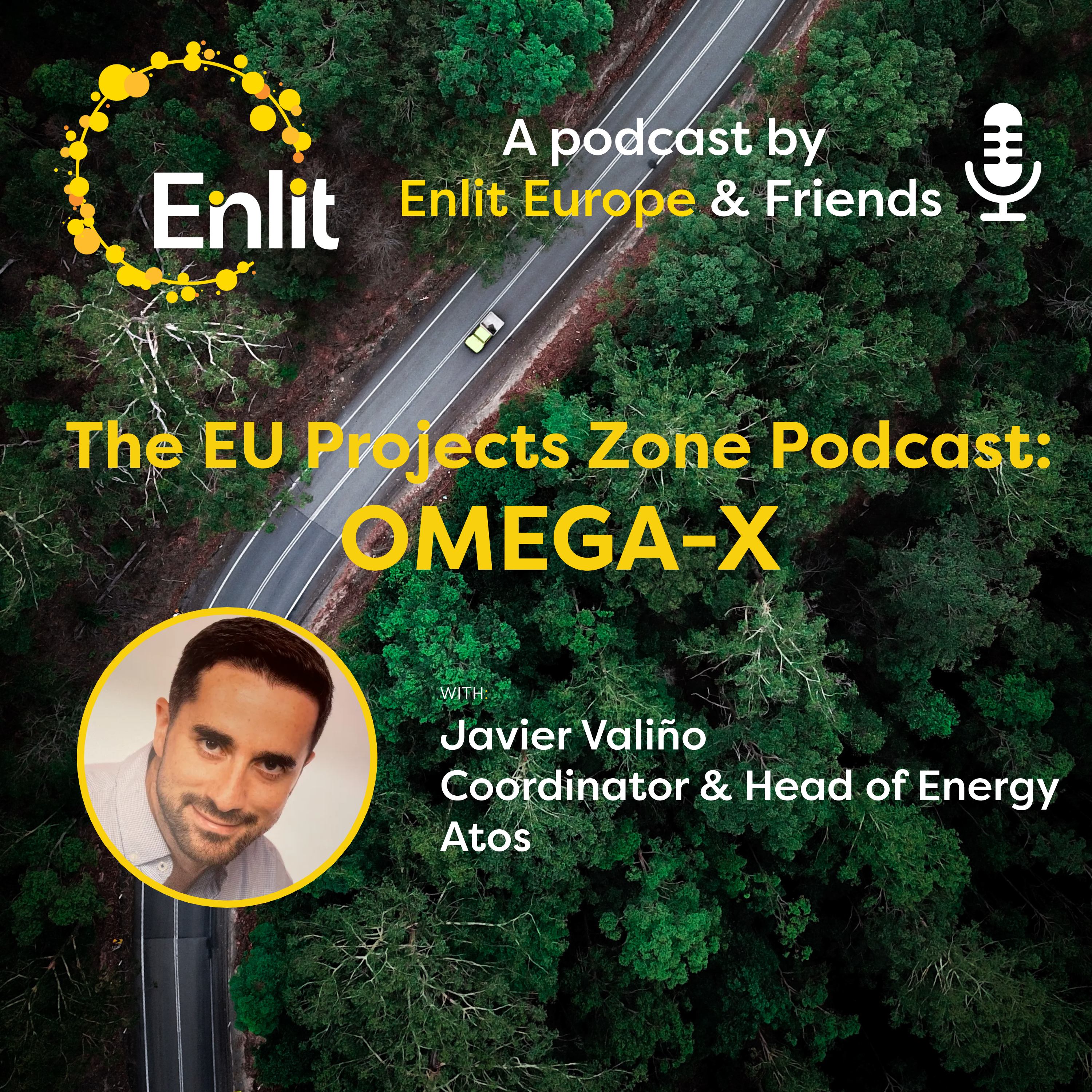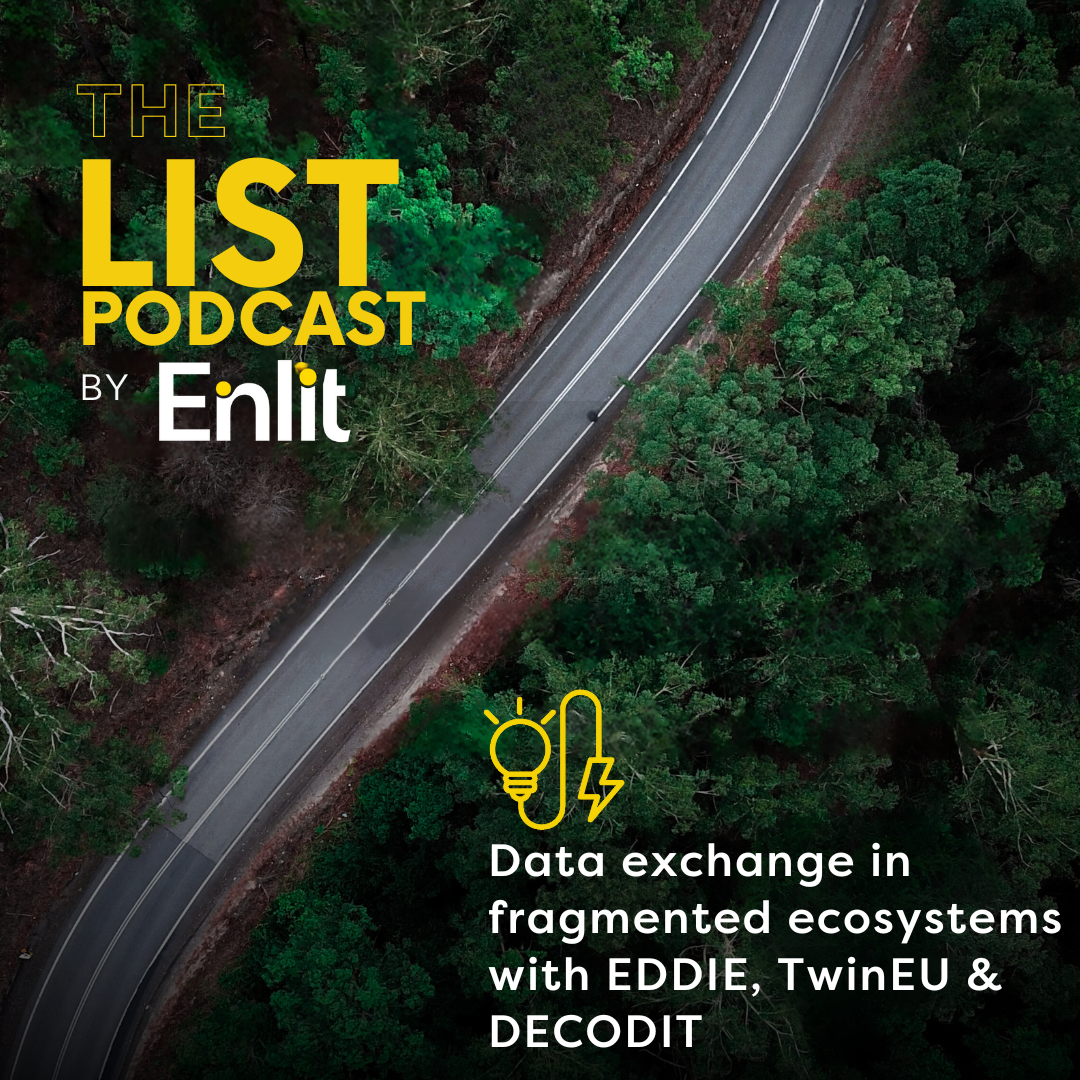Episode Transcript
[00:00:11] Speaker A: Welcome to the EU Energy Projects Podcast, a podcast series from Enlid and friends focusing on the clean energy transition for the European Union and the EU Commission funded energy projects that will help us achieve it. My name is Areti Daradimu. I am the editor of the EU Energy Projects podcast and your host.
One of the EU's top priorities is ensuring that all Europeans have access to secure, clean and affordable energy. This is a must. The EU actively supports a range of cross border energy infrastructure projects that prompt efficiency in energy production, storage and distribution. These initiatives are crucial for a more integrated and resilient grid.
To discuss the coordination and plan planning of these infrastructure projects which are vitally important to meeting the EU goals, I'm joined by Mark Van Stiebhaupt, Deputy Head of Unit Research Innovation Digitalization Competitiveness at DIGI Energy at the European Commission.
This episode was recorded in front of a live audience at ENLIT Europe in Milan, where energy projects were at the heart of the event.
Marcus, why is coordinated infrastructure planning important for achieving the 2030 and 2050 goals of the Commission?
[00:01:36] Speaker B: So it is extremely important if we want to meet our ambition for the climate and for the energy transition. We have a very high ambition basically to be climate neutral at the latest by 2050 and already for 2030, high ambition in terms of reducing greenhouse gas emissions, increasing the share of renewables to 42.5% or even 45% and also improving energy efficiency. And that means that there is going to have to have a change in the energy carriers that we use. And these energy carriers go by infrastructure. So there will be the need for a lot of electrification. I was just sharing a stage with the Secretary General of Euro Electric who was saying that electricity is now, let's say, 25% of the overall energy mix, 25% of that consumption is through electricity and that should go up to 50%. According to him, that means that we need a lot of new infrastructure. We need to make better, more efficient use of the infrastructure we have, but we also need a lot more electricity infrastructure. And also if we're talking about decarbonizing the energy intensive industry, we are going to need new infrastructure. They need to move away from using gas and methane and look for alternatives like hydrogen. We need to catch the CO2 that they still produce and put it in the ground, basically SCCUs or do something useful with it if we can find useful purposes. That also requires infrastructure to transport that. So it's really a big change in the type of infrastructure we need. And if we want to make sure that all of these things happen at a European scale in a way that makes use of the added value and let's say the comparative value of different countries and what is already there, then that requires a coordinated infrastructure planning both across member states, but also across energy carriers. So we don't need to invest in a huge amount of electricity infrastructure if some industry is going to use hydrogen, or we don't need to use a lot of CO2 infrastructure if processes are actually being decarbonized. So we really need to have a cross energy carrier integrated planning. And then of course also coordinated planning between the different levels, let's say the transmission level, the national level and the local level. So in multi, multidimensional coordinated planning is needed.
[00:04:09] Speaker A: So you would say that it is one of the focus points of the vision of the EU Commission for the future. But what specific steps then need to be taken in order for this focus to actually bloom into something that we all want?
[00:04:27] Speaker B: I think we have a few tools to do that. The core tool I think is the Trans European Networks for Energy. That is a regulation that already exists for some years that is linked to the Connection Connecting Europe facility. So it's linked to a fundamental. It requires network operators at transmission level, traditionally electricity and gas, but now also hydrogen, to jointly plan and make a network planning. That's actually not in the 10e regulation, that's in the internal market legislation, but it's the 10e regulation that then sets out a process of how are we actually going to build that infrastructure that we need. And the focus there is very much cross border to make sure that the things are coordinated between different member states. And what you can see is that like I said, traditionally we started with electricity and gas, electricity making a separate plan and gas making a separate plan, then we had have required that they also come together and make a joint plan. Now hydrogen comes in the equation. Now we are also emphasizing more and more the need to coordinate between the transmission level and the distribution level. So our basic tools are that cooperation of network operators at EU level, both for gas, electricity and hydrogen at transmission level and at distribution level. So I think that is in a nutshell, the.
[00:05:45] Speaker A: How would you say that? Let's say if we follow those steps, then the goals of the Commission for 2030, 2050 are feasible. Of course we can't foresee the future, but in a logical way, let's say.
[00:05:57] Speaker B: I think that the basis is there to achieve that. I think if of course, we now are starting a new phase with a new commissioner who will hopefully get the green Light from the Parliament very soon, but he has already received a mission letter from our president that said, what are some of the key things that he is expected to do? And if you've seen that, you've seen that there is a big emphasis on infrastructure, there's a big emphasis on implementing all the things that have been agreed as part of the Green Deal in the last five years, but all that implementation requires infrastructure. So that over the last years, with the digitalization of Energy action plan and with the grids action plan, we have really also shifted the focus to how do we actually then make these things work and what is the infrastructure that we need to deliver all these things and how can we get a better planning and a better framework for investment going? So I wouldn't say that everything is on track and will automatically get there. I think with that mission letter there is also a clear identified need to develop further strategies to support electrification, to support the build out of new infrastructure that's needed, and to also smarten that infrastructure through digitalization and AI.
[00:07:06] Speaker A: Speaking of digitalization, what technologies would you say are essential for digitalization and how do they promote investment in sustainable infrastructure?
[00:07:18] Speaker B: Yeah, I think for that if you look around here, you get quite a lot of inspiration of all the technologies that are needed. And I won't pretend that I know all of them, but I think if we talk about smartening the grid, one of the things that we have seen that comes up in the discussions that we are having with both the network operators, the transmission and the distribution level, as well as the regulators, so both Acer and the national regulators on how can we actually promote digitalization of the grid and how can we, let's say, increase the investments in digitalization to make better use of the grid that we have is observability. So all the technologies that have to do with observability of the grid are key. And that of course, one key component is a smart meter. That's not exactly hard, groundbreaking technology, even though in some countries they still think it is.
But also smartening the substation, smartening the transformers, being able to monitor the lines, things like dynamic line rating to make better use of the infrastructure, all these type of technologies are key. And I think that then with increased observability, with increased availability of data, with more data exchange also between the different parties, because of course also the energy system is organized in such a way, in particular in Europe, that there are many different parties who depend on each other and who need to cooperate and who also need to exchange more and More data. And if we start making that happen, then we start also achieving or providing the amount of data that can actually help to train better AI, to help us to run that grid of the future better. So I would say these are some of the key, but I think one key thing that I would say is that as far as I'm concerned, I don't think that digital technologies are the bottleneck. If I talk with the colleagues in Connecticut and they talk about high performance computing or AI and all the things that they can do, let's say what the energy system would like to do or what energy companies come would do for them is not a challenge. They're like, okay, our high performance computing, we don't need the fastest high performance computing to do these type of things. So it's more a matter of getting the right amount, let's say the sufficient amount of data to be able to create an overview of how the different elements link together. That will then help us to deploy the digital technologies at best.
[00:09:45] Speaker A: Did you know that ENLIT has another podcast? The Energy Transitions Podcast is a broad ranging bi weekly podcast about the people accelerating the energy transition in Europe and beyond. You can find it on Spotify, Apple or wherever you enjoy your podcast. What types of projects and investments are being prioritized to accelerate the energy transition?
[00:10:09] Speaker B: I suppose that now you're talking in particular things like Horizon Europe Life, the Innovation Fund or the Digital Europe Program. In our unit we are part of the bigger group that is preparing part of the Horizon Europe work program. So I can focus in particular on that. And I think if you see also what we have focused on over the last years and what's coming, there's really been an evolution and also a bit of a back and forth. So the evolution I think is about the system innovation. So I think like seven or eight years ago we were supporting projects that were actually testing can solar panels help solve congestion for a distribution system operator. So that was really a technical question. Solved, clear. I think everybody knows now this is things that can happen. So we had technical, let's say what can all the distributed energy do at a, at a for the grid? Then we were supporting more and more system innovation to look at how can all these different actors then work together. So first how do you create a market around these type of using panels to manage congestion, for example? Then how do you create a market that doesn't only look at congestion, but also at frequency management and the wholesale market? So how do you make it easy for a consumer to bring? Let's say to valorize the different types of flexibility in interacting with the TSO or the DSO or the market parties at the same time. And now we are investing a lot in data space projects because one key aspect of making that type of market work, apart from creating the rules, which is what some of our colleagues are doing through the network codes, is really making it easy to bring that type of flexibility to the different parties that can give a value to it. So the TSOs or the DSOs or the energy traders, so to say. And for that we really need an easy access to data now, whether it's a heat pump or an electric car or some parts of the grid, if people don't know from each other what is needed and what certain appliances can provide in terms of flexibility, then it's not going to happen. So we are investing now a lot in data space projects. Some of them are being very good. And we have agreed now with the colleagues of Connect who have now selected a project to support the first deployment of a data space through the Digital year program that's going to be announced quite soon. And maybe one thing I should mention, so this is the software side of things. Then of course there's also a lot of attention to the hardware and let's say for example superconduct of the grids in order to increase the ability of a cable to transport more electrons, basically make better use of the infrastructure. Or when we talk about DC technologies that's becoming more and more important when much of the generation and also much of the consumption is more and more DC based, then need to see how that can be integrated into the grid both at high voltage level offshore with HVDC grids and the transformers. And how do we make all that interoperable? We have a huge project there called Inter Opera which I think is one of the biggest horizon year projects ever. Of which we have also high expectations in terms of bringing a breakthrough for developing a real mesh offshore grid and then also at the local level with local DC grids in buildings, in districts and how that can help integrating higher sales of renewables.
[00:13:29] Speaker A: Let's discuss a little bit about the clean industrial deal. I have just a question for you. How will it contribute to decarbonizing European industries and supporting their overall climate go?
[00:13:40] Speaker B: I think how will it contribute? I hope it will help and provide a good basis. Of course the emphasis over the last years have been a lot about setting targets and now it's implementation of making that happen. On the one hand with a big focus on infrastructure, but another big focus is also how do we help the energy intensive industry to decarbonize. And that's going to be one big focus of that clean industrial deal, which again will need to focus on grids. But there, this coordinated infrastructure planning that we started off with is even more important. If we talk about, let's say harbors or big industrial areas like here in Milan or in Torino, where you can have big interactions between different types of energy carriers, one company's waste heat is another company's useful heating supply. This type of integrated planning at a local level is one thing that we think can make a big contribution. And where I think we haven't exploited yet all the instruments that we can or all the tools that we can, that we can imagine or can develop. I think there are also many other different things. But I think the key issue there is basically the energy intensive industry is a key part of the industrial landscape of Europe. There is no, let's say we have no interest in importing things from other countries that are very carbon intensive because they move away here. So we really need to keep them here. And we're creating, I think with the work that has been happening over the last year and that is going to intensify now, for example, also through the Net Zero Industry act, creating on the one side the conditions for the energy intensive industry and the support to decarbonize both permitting and other type of tools, but also create a demand for their projects or for their products. Sorry. So this idea of lead markets for decarbonized steel, for example, I think these are, we need both and I think that is going to be some of the key points of the clean industrial deal.
[00:15:39] Speaker A: Marc, thank you very much for this short unfortunately, but very meaningful, I believe, conversation. Thank you.
[00:15:44] Speaker B: Thank you.
[00:15:47] Speaker A: You've been listening to the EU Energy Projects podcast, a podcast brought to you by Enlite and Friends. You can find us on Spotify, Apple and the Enlit World website. Just hit subscribe and you can access our other episodes too. I'm Aretitaradimu. Thank you for joining us.




